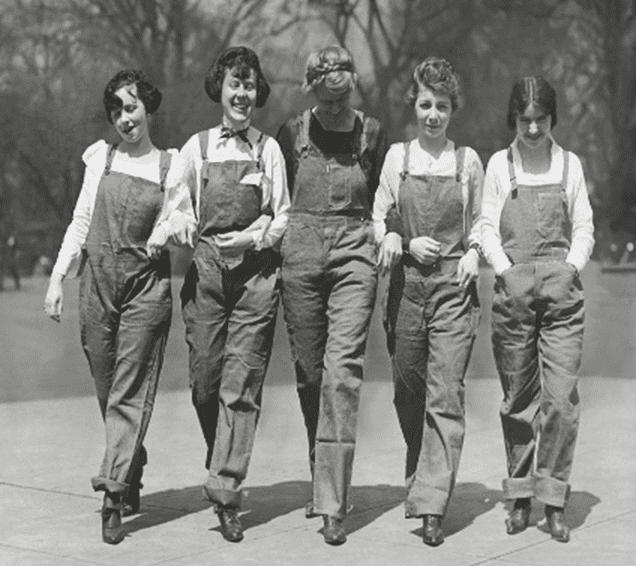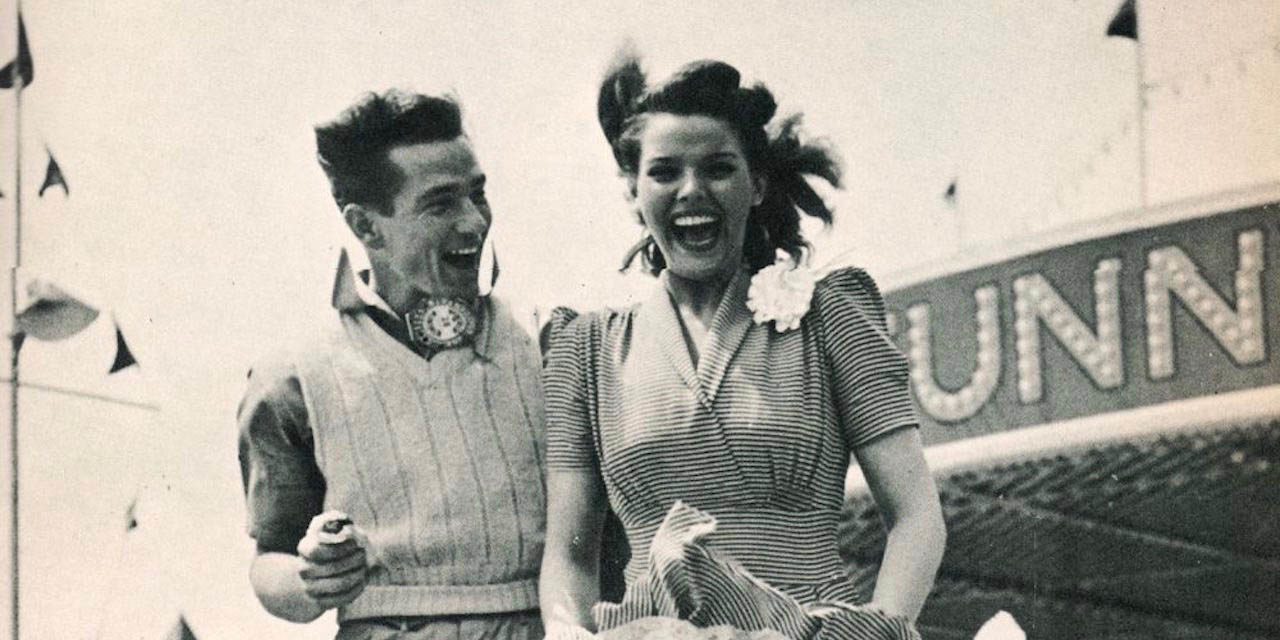
This Photo by Unknown Author is licensed under CC BY-SA
How WWII Changed Fashion History
By Guest Columnist, Maxine Poage
If you have seen movies set in the 1940s, you’ll recall the formal suits, long skirts and militaristic style of the mid-20th century. You might not realize it, but a large number of social and environmental changes occurred before these styles developed into the ones we wear today. WWII resulted in the evolution of sportswear, a new silhouette in women’s fashion, and iconic styles in both men’s and women’s wear.
Throughout history, American designers had usually followed French fashion trends. During the war, however, America became less dependent on Paris as a leader in style and started to develop its own look, utilizing sportswear. This leisurewear included athleticwear and knits, a more casual style of clothing that the world hadn’t really seen before.
After the war, America became well known as an icon for its sportswear. As more women began to enjoy and participate in leisure activities, sportswear was further developed by American designers to fill the gap. They created a new industry for women who wanted less-restrictive clothing. For the first time, fashion was led by America instead of a European country. The fabrics were designed to be easy to care for. Items such as Bermuda shorts, scarves, sweaters and capris became popular. Some of the designers of the new sportswear genre were women, who understood the needs of women and could incorporate them into their designs.
While America developed sportswear, Parisian designers pioneered an altogether different silhouette. At the time, women’s fashions were boxy and simple, made with drab colors and little ornamentation. The “New Look” style of 1947, by the French designer Christian Dior, became popular as the war and stringent fabric rationing ended. The public was tired of the restrictions of rationing and the harsh military styles of the war years. The New Look was a rejection of these styles; it offered an abundant use of fabric, a narrowed waist, sloping shoulders and an ultra-feminine silhouette. This departure from previous fashion represented a change in attitude and hope for a new era after the war. The feminine New Look was highly appealing to the public. It became popular in the U.S. in the late ‘40s and remained popular well into the next decade.
During WWII America welcomed new styles, materials and fabrics that eventually became commonplace over the next few decades. Many iconic garments came into being as a result of the war (e.g., the bomber jacket). Zippers, rubber, metal for corset boning, nylon and wool were unavailable during the war because they were allocated to the military. This led to innovations in textiles and fashion design. Synthetic materials like rayon became more widely used for daily life and fashion.
Because of this strict rationing of materials, American designers such as Claire McCardell used unconventional fabrics that were not in demand by the military. She employed cotton denim, jersey, gingham and calico in her designs for everyday wear. Sequins, also a non-war material, were used in fabrics and as decorations on sweaters. After the war, the tropical look became popular, featuring prints such as exotic flowers and plants. First seen on Florida’s and California’s beaches, the iconic Hawaiian shirt for men was born. Similarly, more leisurely styles, such as the peasant blouse and skirt inspired by Frida Kahlo, rose in popularity.
Another interesting development during this period was the introduction of cork in shoes. Because the main importer of rubber was Japan and leather was allocated for the war effort, designers had to turn to other sources for the manufacture of shoes. Cork was found to be a very comfortable shoe-making material and is still seen in footwear fashion today.
One of the biggest changes to emerge during WWII was that, for the first time in history, it became acceptable for women to wear pants. They were often required to wear trousers for wartime manufacturing jobs, and loungewear and gardening attire followed. This development paved the way for future styles and the eventual popularity of many styles of trousers for women.
Fashion in the U.S. was greatly influenced and expanded by the Second World War. It resulted in the creation of a fashion industry, a new silhouette for the next decade and many iconic styles of clothing. The years following the ‘40s were marked by a rapid change in fashion and innovation, and the clothes you are wearing today are likely a direct result of the innovations catalyzed by WWII.
About the author
Maxine Poage, Student and Intern, Western Michigan University
Fashion Merchandising and Design Major
Maxine is beginning her junior year at Western Michigan University and plans to graduate Spring 2023. Maxine joined the KDI Consulting team in June of 2021.

